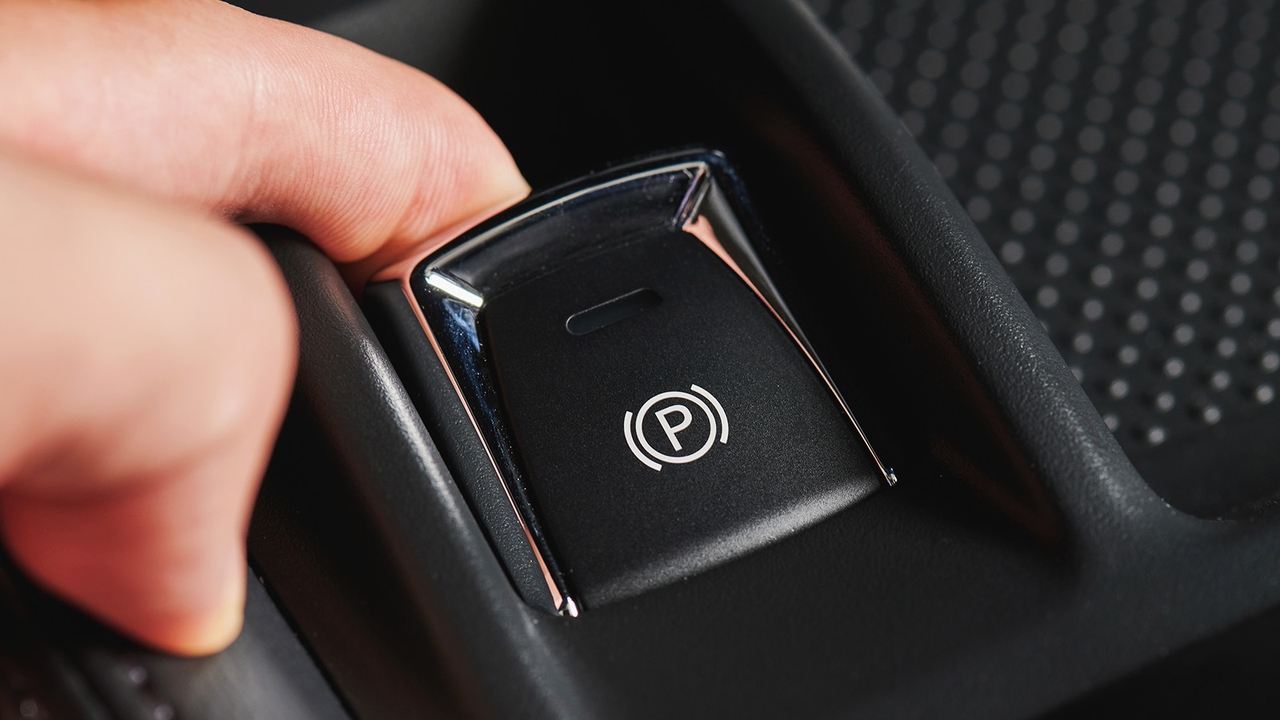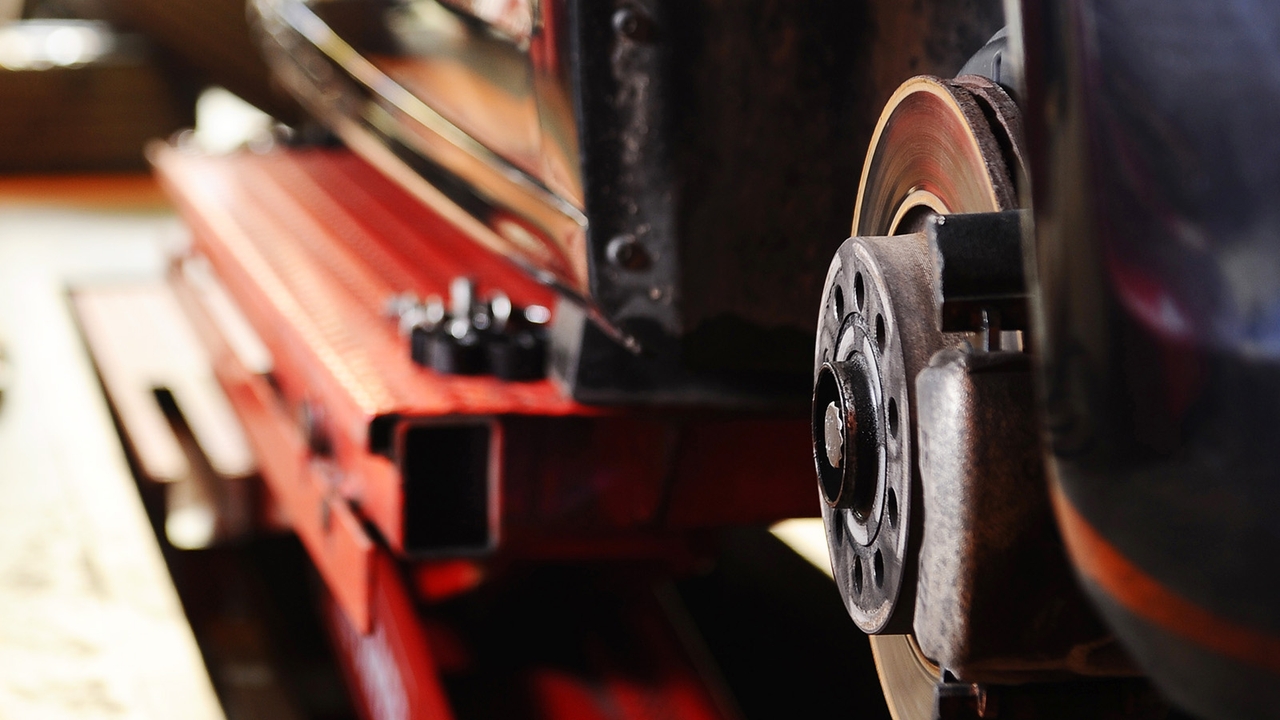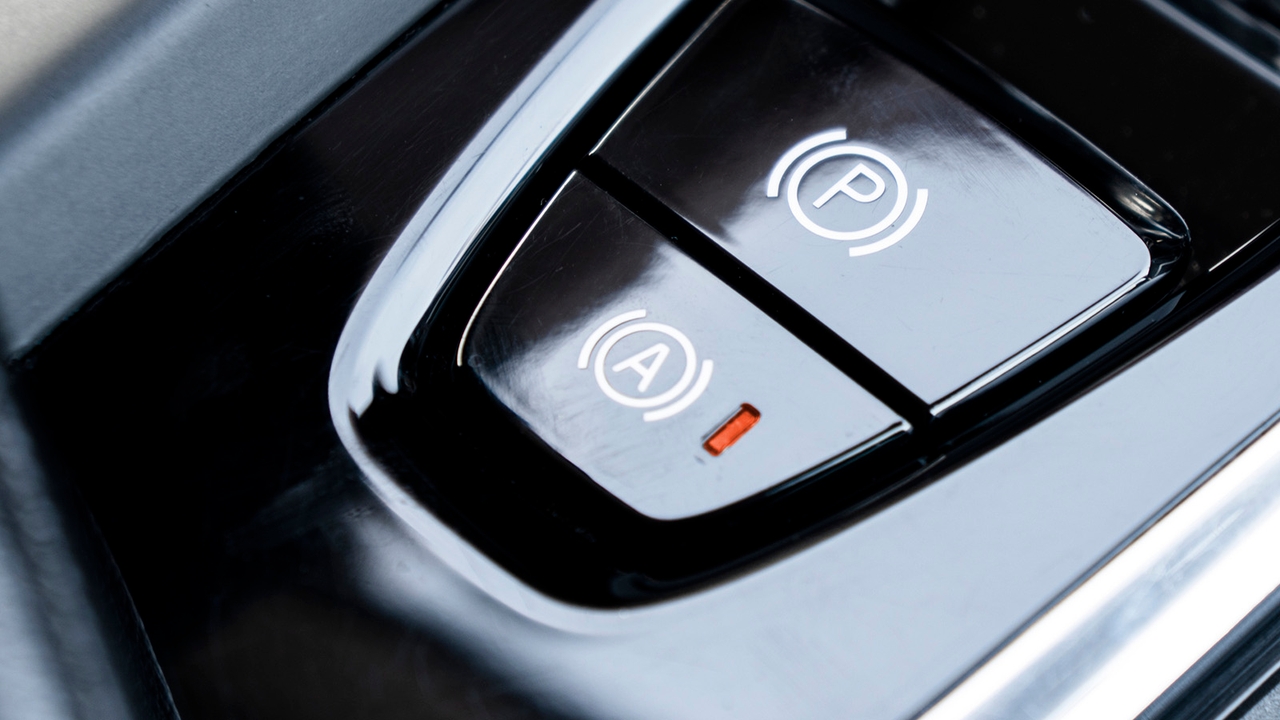Electronic handbrakes – sometimes called electronic parking brakes – have mostly replaced the manual handbrake levers found in older cars.
This guide will talk you through how to use your car's electronic handbrake, as well as explaining how it works and what the benefits are.
How to use an electronic handbrake

If you want to apply your car's electronic handbrake, simply come to a stop with your foot on the brake pedal. Keeping the brake pedal pressed, pull the electronic handbrake button – marked with a capital 'P' inside a circle with lines resembling brackets either side.
You'll feel the brake pedal being pulled away from your foot. This lets you know that the car's electronic handbrake is fully applied and you're safe to take your feet off the pedals without the car rolling away.
How do you release an electronic handbrake?

The easiest way to release your electronic handbrake is to simply drive off normally. Your car will sense that you've started moving and will immediately disengage the electronic handbrake for you. This means no fiddling with buttons and no rolling backwards while finding the bite point.
You can also disengage the electronic handbrake using the same button that activates it. While pressing the brake pedal, simply push the electronic handbrake button and you'll feel the brake pedal being pushed into your foot. This signifies that you now have manual control over the car's brakes and the electronic handbrake is released.
How to use an electronic handbrake on a hill
Electronic handbrakes work exactly the same way on hills as they do on level ground. That means you apply the electronic handbrake by pulling the associated button while holding the brake pedal, and release it by simply driving off again or physically pushing the button.
How do electronic handbrakes work?

Electronic handbrakes actually work in a very similar way to manual handbrakes. Ultimately, the system locks the car's rear wheels using either the regular brake callipers or using a shoe-style brake mounted inside the disc or drum.
The difference is that an electronic handbrake uses a small motor with a series of gears to press the calliper or shoe against the brake. In older cars with manual handbrakes, it's simply the action of you pulling on the lever and latching it in position that locks the brakes in place.
What cars come with an electronic handbrake?

Electronic handbrakes are standard equipment on almost all new cars, so it'd actually be easier to point to models that don't come with one.
You'll still find old-fashioned manual handbrakes on affordable cars that've been on sale for a long time such as petrol-powered Fiat 500s or Citroen C3s. There are also a small handful of high-performance cars that still have manual handbrakes for track and off-road driving, such as the Toyota GR Yaris.
Pros and cons of electronic handbrakes over manual handbrakes
| Electronic handbrakes | Manual handbrakes |
Pros:
| Pros:
|
Cons:
| Cons:
|
On balance, we think electronic handbrakes have more benefits than drawbacks. They save space in the interior while also saving your arm muscles from having to yank on a handbrake lever. Plus, electronic handbrakes eliminate the risk of not putting the handbrake on tightly enough, which could cause the car to start rolling away if it's on a hill.
Of course, it's hard to argue with the simplicity of a physical lever pulling a cable attached to your brakes, which means it's usually a bit more expensive to fix an electronic handbrake if it goes wrong. However, these systems have been around for more than 20 years now and reports of failures are vanishingly rare.
What is auto-hold?

Auto-hold is another handy braking function. Carmakers often put the button to activate it next to the electronic handbrake.
This system lets you come to a stop, say at a junction or some traffic lights, and prod the brake pedal. This locks the brakes on – confirmed by a little green light in the instrument cluster – letting you take your foot off the pedal without the car rolling away.
To start moving again, simply pull away like normal and the auto-hold will immediately disengage. This makes hill starts especially easy because the brakes are being held by the system until you've got the car going.
Learn more about cars
We've written dozens of handy guides just like this one to help you become a motoring pro. Once you've done your research, check out the great savings available on used cars at Motorpoint.

































